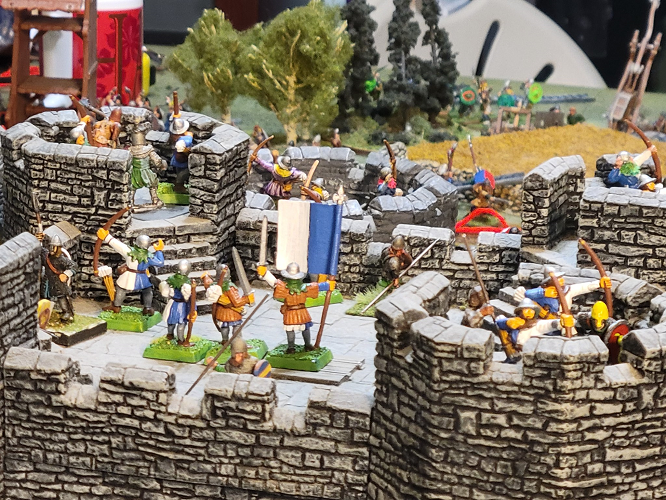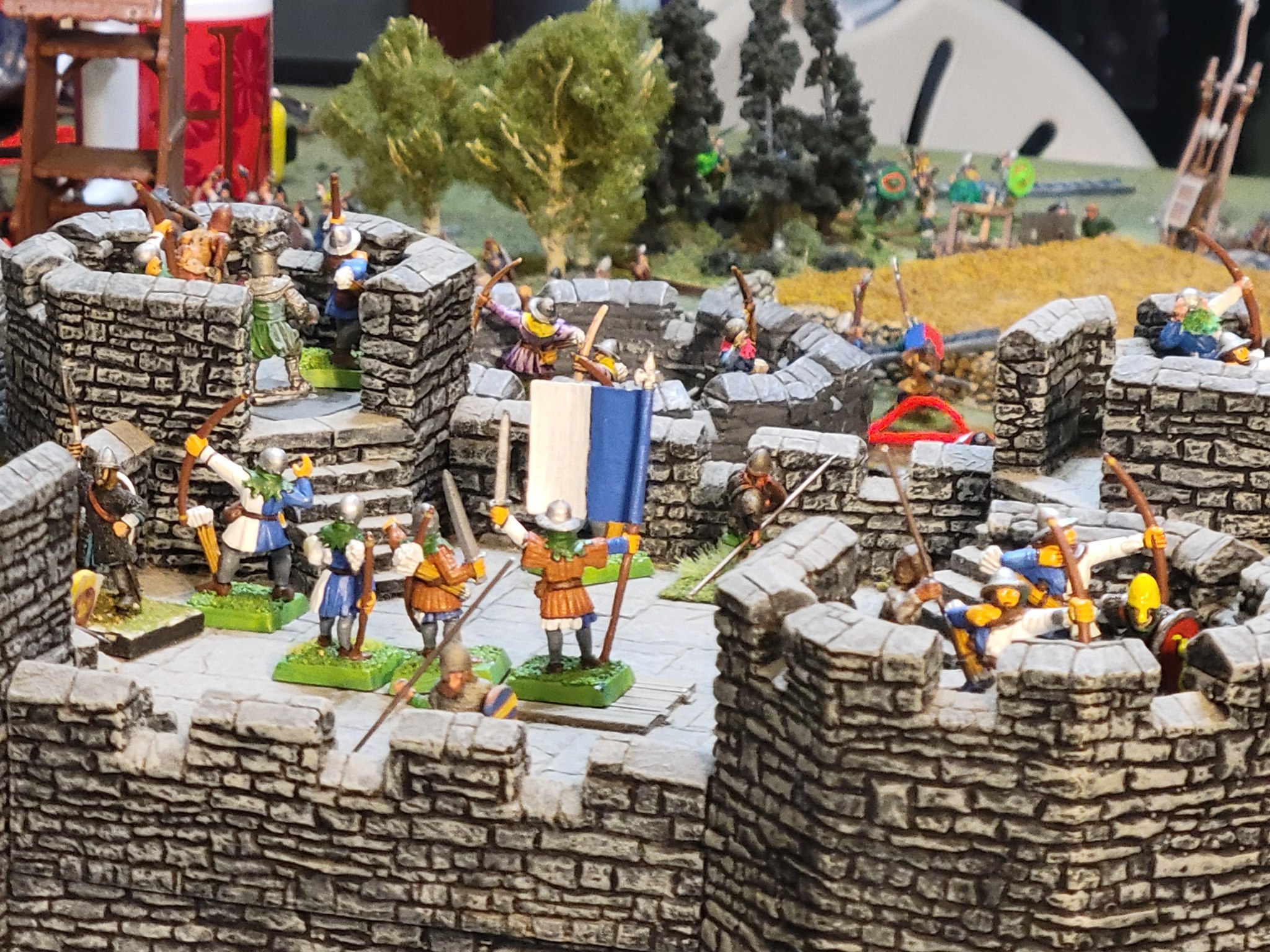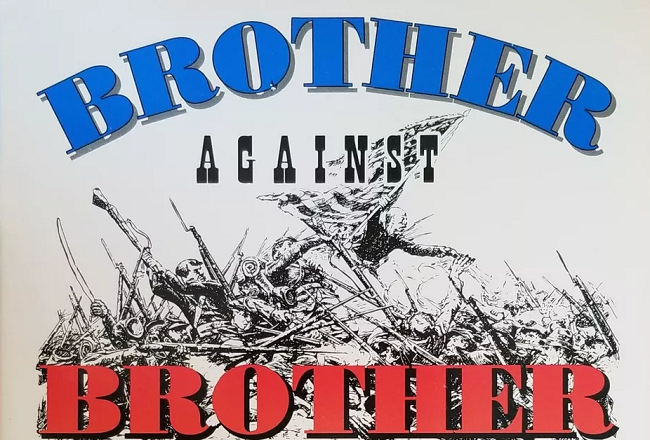Dark Ages and Medieval wargaming focus on warfare and conflicts during the period spanning from the fall of the Western Roman Empire in the 5th century to the end of the Middle Ages in the 15th century. This era includes a wide range of historical events, knights, castles, and battles that shaped the landscape of Europe and beyond. Here are some key aspects of Dark Ages and Medieval wargaming:
Historical Periods: Dark Ages and Medieval wargaming covers a significant span of time, encompassing various sub-periods such as the Viking Age, Crusades, Wars of the Roses, Hundred Years’ War, and more. Each sub-period offers unique units, tactics, and historical context for players to explore.
Knightly Orders and Feudalism: The era of knights and feudalism is a prominent feature of Dark Ages and Medieval wargaming. Players can command armies composed of knights, men-at-arms, archers, and peasants, reflecting the social structure and military organization of the time. The chivalric code and knightly orders add a distinct flavor to the game play.
Castle Sieges: Castles and fortifications played a significant role in medieval warfare. Dark Ages and Medieval wargaming often include rules for castle sieges, allowing players to simulate the strategic challenges of attacking or defending fortified positions. This involves siege engines, scaling walls, breaching gates, and the use of various siege tactics.
Historical Factions: Wargames in this period feature a variety of historical factions, including medieval kingdoms, feudal lords, Viking raiders, Crusader armies, and more. Each faction possesses unique characteristics, heraldry, and unit types, reflecting the diversity of medieval warfare and providing players with strategic choices.
Melee Combat and Archery: Dark Ages and Medieval wargaming emphasize the importance of melee combat, reflecting the close-quarter battles of the period. Players must consider the effectiveness of various weapon types, such as swords, axes, polearms, and maces. Archery and the use of long-range missile weapons are also significant elements to simulate in these wargames.
Crusades and Holy Wars: The Crusades are a popular theme within Dark Ages and Medieval wargaming. Players can reenact the conflicts between Christian and Muslim forces, including famous battles such as the Siege of Jerusalem or the Battle of Hattin. The Crusades offer unique challenges and the opportunity to engage with the religious and political dynamics of the era.
Warfare in Different Environments: Dark Ages and Medieval wargaming often takes place in diverse environments, including open fields, forests, hilly terrain, and urban settings. The rules and mechanics account for the impact of terrain on movement, visibility, and tactical decisions. Players must adapt their strategies to make effective use of the environment.
Historical Figures and Legends: The Dark Ages and Medieval period is filled with legendary figures and heroes. Players can command historical characters like Richard the Lionheart, William the Conqueror, Joan of Arc, or fictional heroes inspired by Arthurian legends. These characters often possess unique abilities, inspiring their troops and influencing the outcome of battles.
Dark Ages and Medieval wargaming offer an immersive experience, allowing players to engage with the complexities of warfare and politics during this transformative era. The period is rich in historical events, famous battles, and iconic figures, providing ample material for both historical accuracy and fictional storytelling.
Shop Amazon for: Dark Ages and Medieval Wargaming
Who Makes Dark Ages and Medieval Miniatures? | Rules for Dark Ages & Medieval Wargaming




